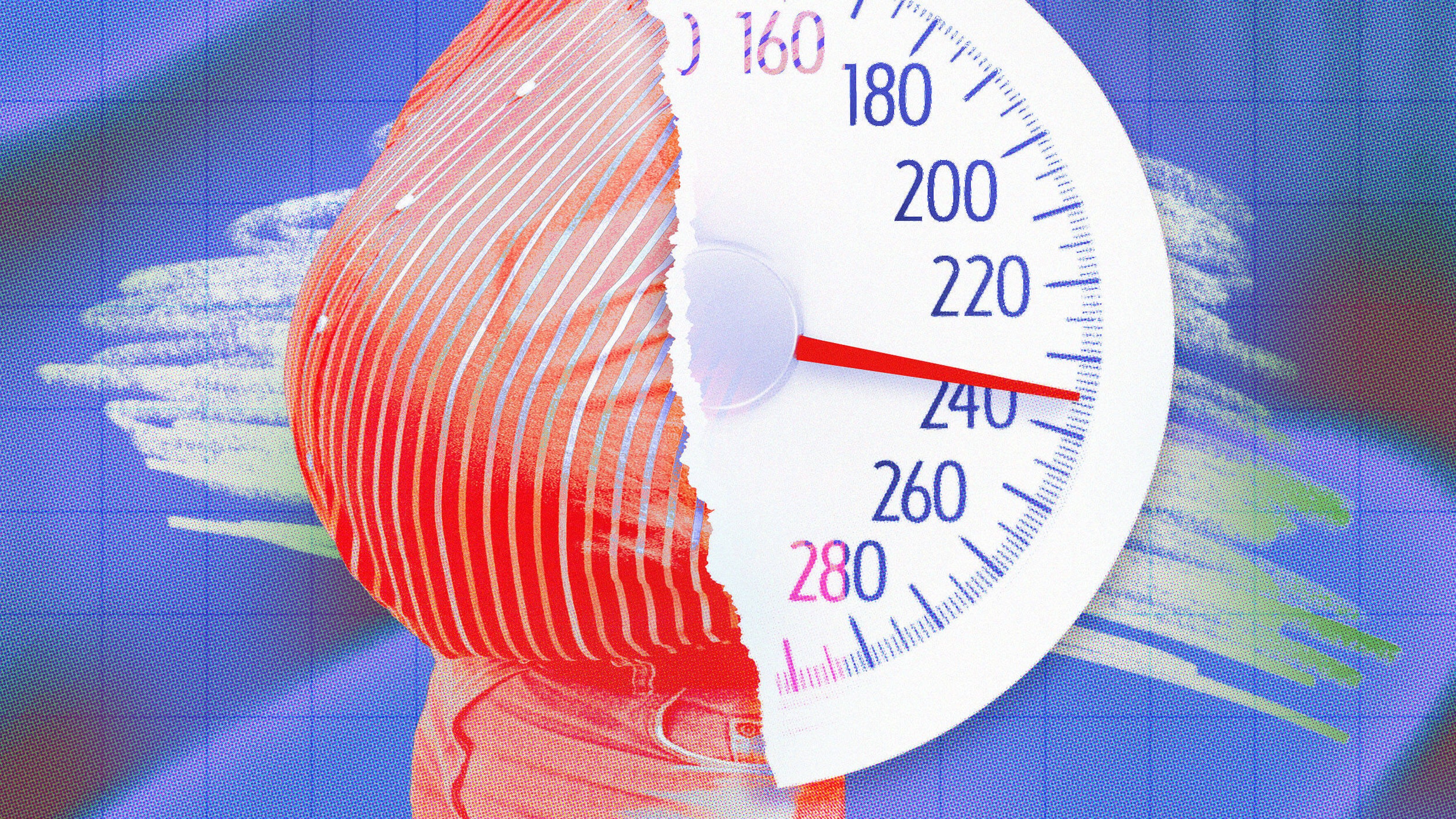What Is The Impact Of Choosing To Remain Unvaccinated Against Covid-19?
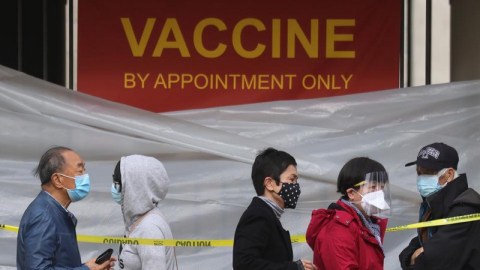
Delaying or refusing vaccines for non-medical reasons is literally a killer choice.
When it comes to issues at the intersection of science and society, there are all sorts of things that science alone cannot tell you. It cannot tell you what policies people will or won’t accept in their lives. It cannot control how people will react to restrictions on their behavior. It cannot know what political machinations or misinformation will arise to try and influence public opinion. It cannot know which public health interventions will be ruled to be in compliance or in defiance of a country’s constitution. And it cannot — on its own — chart a path forward that won’t result in civil unrest. When it comes to crafting policy, science is just one of many issues that must be taken into account.
But, unambiguously, there are things that science can accurately inform you about that no other line of thought can. Science can tell you what the health outcomes will be if various policies are successfully put into place. Science can tell you what the risks are, to yourself and your long-term health, of being vaccinated versus being unvaccinated. Science can tell you what the effects of wearing masks and social distancing are on promoting or stymieing the spread of a disease. And science can even tell you, on an individual basis, how much damage you do to the world each and every day that you choose to be unvaccinated.

We know, at the present point in time, that there are four main interventions that we can take to minimize the spread of the novel coronavirus, SARS-CoV-2, and the disease it causes in humans: Covid-19. They are:
- minimizing your contact time with people outside of your household, particularly in indoor spaces and spaces with poor air circulation,
- maintaining a substantial physical distance when you are in contact with them,
- wearing a mask when you’re in contact with people outside of your household,
- and getting fully vaccinated with whichever of the approved vaccines you have access to first.
The first three are behavioral interventions whose benefits have been unambiguously demonstrated through numerous large-scale studies. SARS-CoV-2 is primarily an airborne disease — passed through exhaled and expelled droplets and aerosols from one person to another — where the likelihood of transmission is directly dependent on the total viral load encountered by another person.
The more time you spend in contact with an infected person, the higher the viral load you receive. The more enclosed the space where you’re breathing in the same air, with the same pathogens, over and over, the higher the viral load you come into contact with. The closer in proximity you are to an infected person, the higher the viral load you receive. The less effectively-masked an infected person is, the higher the viral load you’ll receive. And — although the protection is slight — the less effectively-masked you are, the higher your total viral exposure you’ll receive.
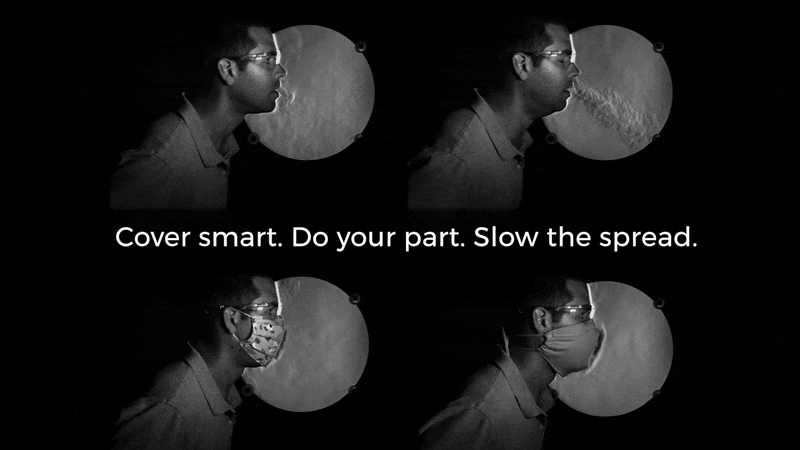
All of this is to say the following: as long as there are infected people walking around in public spaces with SARS-CoV-2, whether symptomatic or asymptomatic, they have the potential to infect others. If you want the risk of transmission and infection to others reduced, the interventions of:
- minimizing contact time with those who are (or may be) infected,
- maintaining a substantial distance (where each additional meter of distance helps) from others,
- minimizing your time in indoor spaces (particularly poorly ventilated ones),
- and everyone effectively wearing masks (and particularly if any potentially infected people wear masks),
are the most successful behaviors we can engage in at the present time. If everyone adhered to these recommendations and abided by them, we would see infection rates drop in all locations where they were followed.
In reality, however, a combination of factors have limited the success of these interventions: largely driven by ideological opposition to and non-compliance with them. Even after more than a year of suffering its effects — after more than 600,000 deaths in the United States and over 4.4 million worldwide, after hundreds of millions of infections and millions more afflicted with long-term conditions resulting from those infections — that opposition and non-compliance still persists.
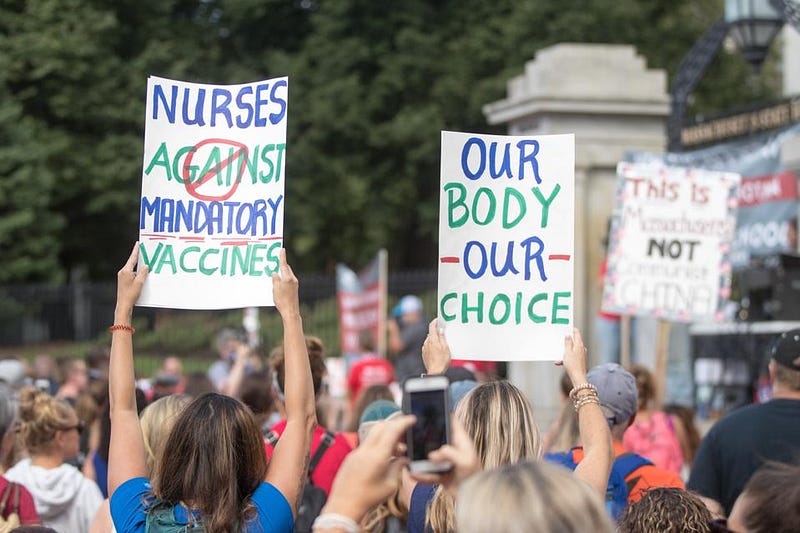
Even with all of that, however, one further intervention still has a chance to bring the pandemic to an end: mass vaccination. If everyone who could be vaccinated actually got fully vaccinated — two doses for the Pfizer or Moderna vaccines; one for the Johnson & Johnson vaccine, the most widely-available vaccines in the United States — we would rapidly discover that:
- the transmission rate of SARS-CoV-2,
- the infection rate of Covid-19,
- the symptom rate among the infected,
- the incidence of severe infection,
- the incidence of hospitalization,
- and the death rate from Covid-19,
would all plummet dramatically.
I’ll say that again, because this is perhaps the most important lesson that we can gain from science: the consequences for health outcomes for an entire country and, by extension, the world. Vaccinated individuals are less likely to transmit SARS-CoV-2, to get infected with Covid-19, to have symptoms if you get infected, to require hospitalization, and to die. We have, in our hands, enough information about these varying health outcomes to make estimates — not free of errors and uncertainties, but estimates nonetheless — of how harmful not only to themselves, but to others, those who willfully refuse vaccines actually are.
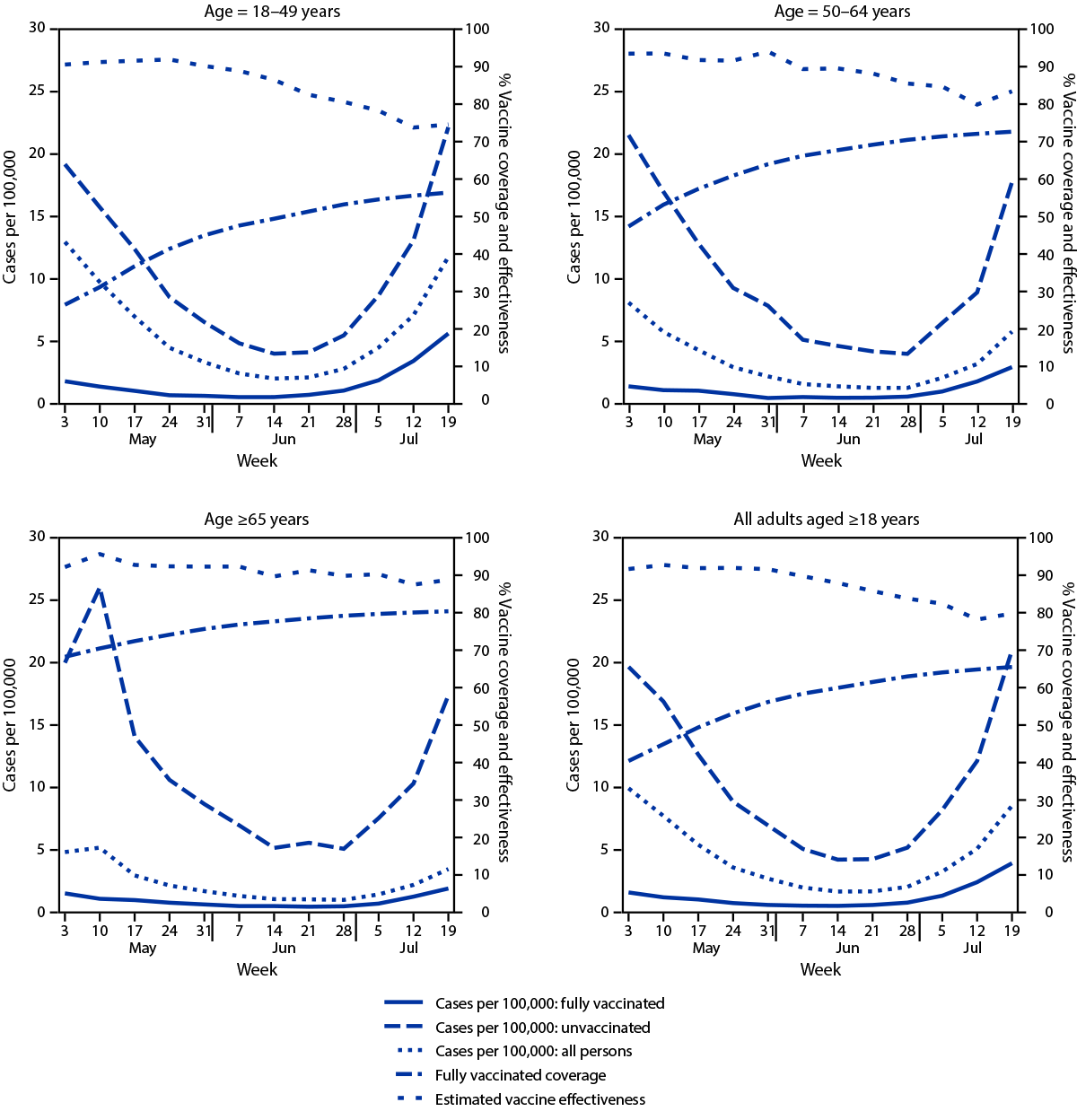
Although there are variances — across states, counties, populations, racial lines, etc. — we can, for simplicity’s sake, assume that since May of 2021, approximately 50% of the population is fully vaccinated, while approximately 50% remains unvaccinated. That’s not quite exactly right, but it’s a good enough approximation to help us draw distinctions between vaccinated and unvaccinated populations. Across a wide variety of states where the relevant data is available, it’s very clear that the overwhelming majority of cases are among the unvaccinated, not the fully vaccinated. Even if we take a conservative figure from these states and presume that 5% of the total cases are among the fully vaccinated and 95% are among the unvaccinated, that means that being unvaccinated increases your odds of contracting a case of Covid-19 by a factor of 18, at minimum.
In fact, the largest study to date comparing vaccinated and unvaccinated individuals — done in New York — shows that overall infection rates remained much lower among adults who were vaccinated versus the unvaccinated cohort: across all ages and across all time intervals, even as the Delta variant increased from being responsible for fewer than 2% of cases to more than 80% of cases. Across all relevant timescales, the infection rate always remained below 5 new cases per 100,000 individuals every day for the vaccinated group. Across that same time, the unvaccinated group never once dropped below that infection rate. The overwhelming majority of infections belong to the unvaccinated.
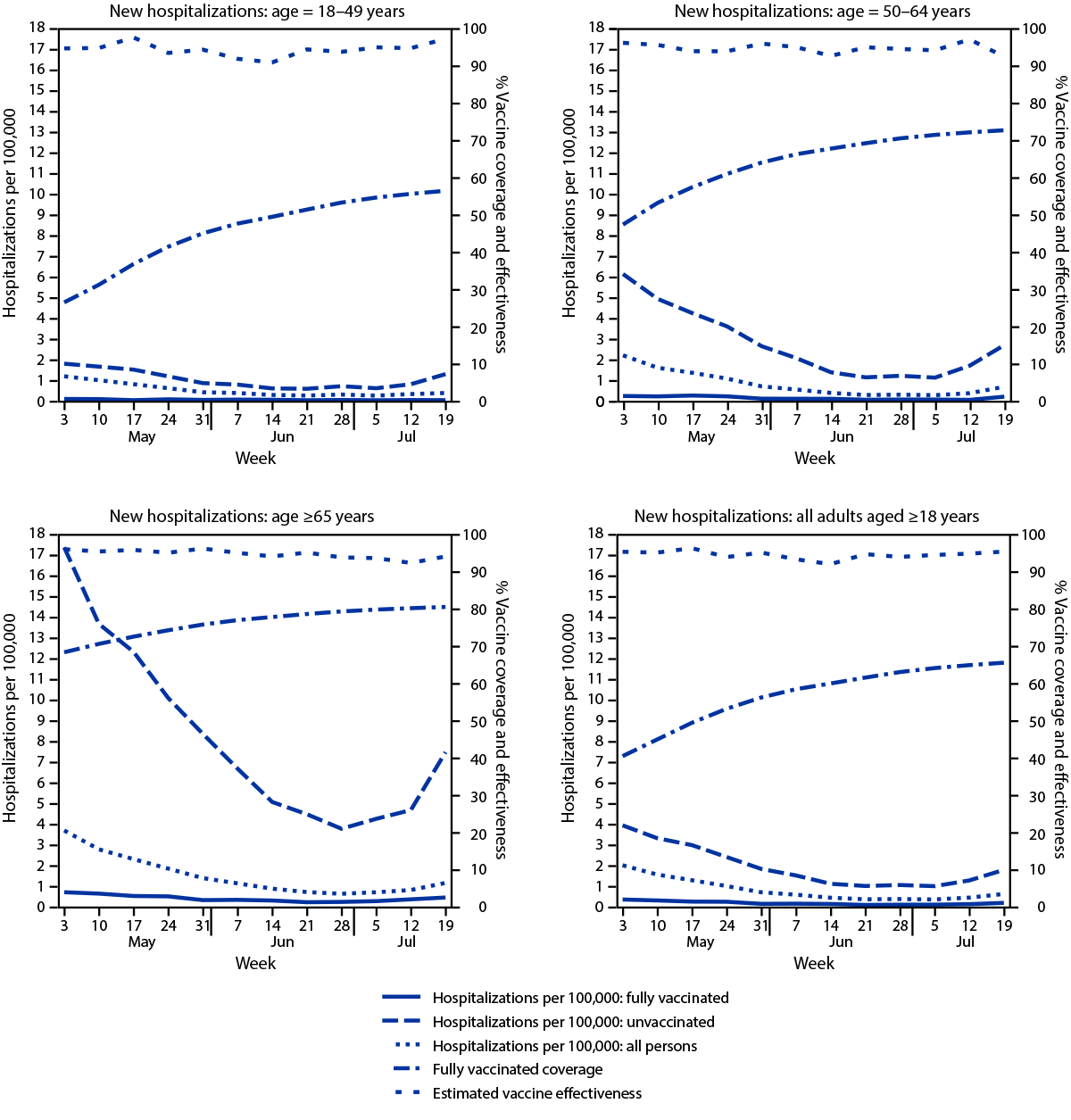
That same study also looked at hospitalizations, and the data there is even more damning among the unvaccinated. For every 100,000 unvaccinated individuals, you could expect 2.03 of them, every day, to need to go to the hospital for a Covid-19 infection. Comparatively, for every 100,000 vaccinated individual, that same hospitalization rate is just 0.17: a risk reduction of 92%. Not only are you less likely to be infected at all if you’re vaccinated, but even if you get an infection, you’re far less likely to require hospitalization for your condition.
The statistics are similar in every other location where they’re available. In Los Angeles, for example, unvaccinated members of the population are still more than six times as likely to be infected than their vaccinated counterparts, while hospitalizations, which hover around 1-per-100,000 at their peak among the vaccinated, are 30 times as high among the unvaccinated. Similar statistics can be found in Virginia and many other locations, dependent primarily on the public availability of the relevant data. All told, you’re far more likely to be:
- infected,
- symptomatic,
- severely ill,
- hospitalized,
- and at risk of dying from Covid-19,
if you’re unvaccinated as opposed to fully vaccinated. Across every relevant metric, the outcomes are undeniably worse.
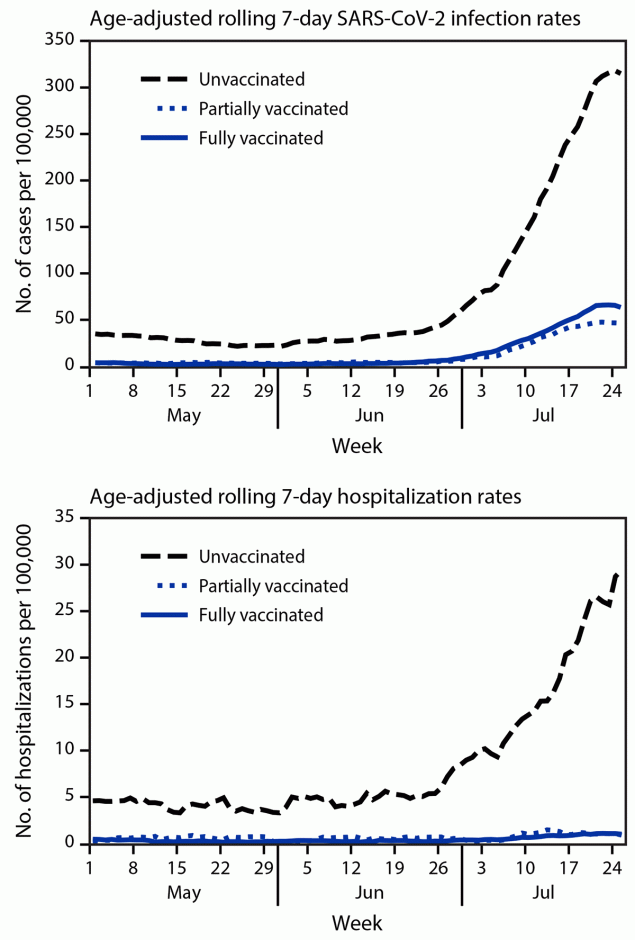
What about breakthrough infections? It’s extraordinarily important to recognize that breakthrough infections — where someone is fully vaccinated but still gets infected — do occur, and occur with far greater frequency among the Delta variant than with the original strain or the previously more-common Alpha or Gamma variants. But although breakthrough infections exist, they’re still uncommon, and it’s still much riskier to be unvaccinated in all ways than to be vaccinated. According to Dr. Amesh Adalja of Johns Hopkins,
“Breakthrough infections occur when a fully vaccinated person tests positive for the SARS-CoV-2 virus. Breakthrough disease occurs when a fully vaccinated person experiences symptoms of COVID-19 disease…
Breakthrough infections are still uncommon, and breakthrough disease is rare. The vaccines are designed to stop serious disease, hospitalization, and death and they are doing that to an extremely high degree — even against the delta variant.”
The bottom lines are as follows.
- Getting vaccinated greatly reduces your risk of getting infected.
- If you do get infected, being vaccinated greatly reduces your risk of a symptomatic infection.
- Having a symptomatic infection makes you far more contagious, on average, than an asymptomatic infection.
- Therefore, even with breakthrough infections occurring as they have, unvaccinated individuals are far more likely — at least ~5 times more likely and possibly up to ~30 times more likely — to lead to the infection of others. This is even true when you include the new context of the CDC’s most worrisome data release to date.
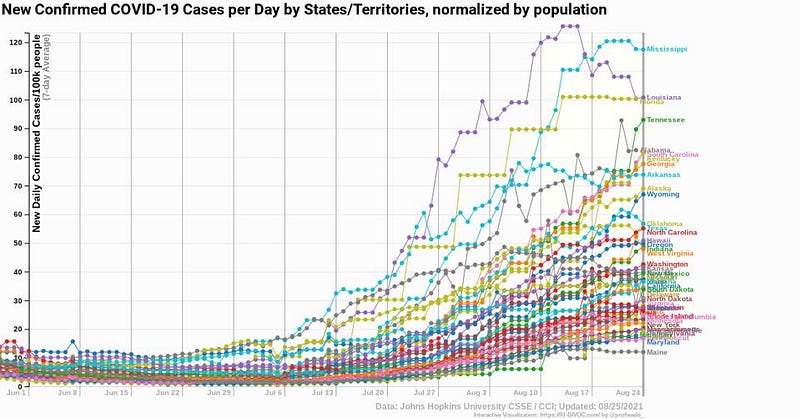
The most recent 12 weeks really paint a dire picture in all 50 states, showing how cases have exploded everywhere as vaccination rates remain insufficiently low while the contagious Delta variant has spread to become the dominant disease vector. At this present point in time, the United States is experiencing roughly 150,000 new cases per day, 11,000 new hospitalizations per day, and 1000 new deaths per day. At least 80% and up to as much as ~97% of the new cases are due to unvaccinated individuals passing their infection onto others, with unvaccinated individuals having worse outcomes from being infected as well. This means, at minimum, that — at this point — the choice to be unvaccinated is tantamount to putting the health and safety of others willingly at risk: each unvaccinated individual causes an average of
- 0.0012 new infections per day,
- 0.00009 new hospitalizations per day,
- and 0.000008 new deaths per day,
over and above what a vaccinated individual causes. If you spent a full year unvaccinated when you could have been vaccinated, your own personal responsibility rises to 0.44 infections, 0.033 hospitalizations, and 0.0029 deaths. With around 100 million people in the United States still needing to be vaccinated, those numbers are going to add up very, very quickly.
It’s not just the unvaccinated who suffer, but also the immunocompromised, many in the disability community, everyone who is too young to be vaccinated, those who are vaccinated but still at risk for severe disease, and those who do not yet have access to vaccines.
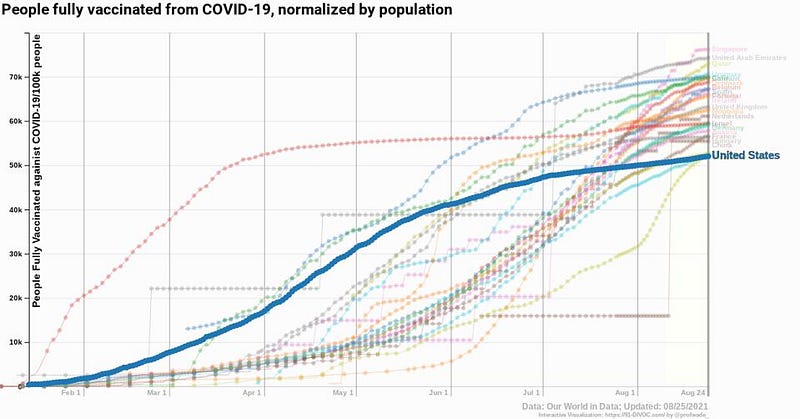
In a civilized society, there’s a standard of behavior we universally hold everyone to as part of the shared social contract: you cannot go around being an imminent, threatening danger to yourself and others. You have the expectation that you can freely move through public spaces without fear for your life, security, safety, or personal well-being. Similarly, if someone, through their own willful actions, brings your personal safety into jeopardy, we have no problem holding them responsible — both civilly and criminally — for the consequences that arise from their actions. Your proverbial “individual freedoms” end the moment they infringe on the rights of others.
By choosing to be unvaccinated, particularly given all the knowledge we have and the correct, verifiable information that’s out there, the willfully unvaccinated are the ones driving infections, hospitalizations, and deaths.
How do we fix this? A vaccine mandate, along with considering holding those who recklessly infect others responsible for the preventable diseases they cause, would absolutely do it. In every case in history where there have been non-medical exemptions allowed for vaccinations, it has been impossible to achieve the goal of a ~95% vaccination rate: the rate required to keep measles outbreaks from occurring and likely similar to the rate required to keep Covid-19 infections from propagating, according to research from the Doherty Institute. Even an ~80% vaccination rate, as Israel is decisively demonstrating, is insufficient to stop the spread of SARS-CoV-2.

There are many examples of issues where individual freedoms have been routinely taken away for precisely this cause. Seat belts are mandatory; indoor smoking in public spaces is banned; driving while under the influence is illegal; you cannot discharge your firearm in a public place; you’re even restricted from playing music above certain volumes or at specific hours. Yet, despite the deaths of over 600,000 people in the United States and the widespread availability of free vaccines, there are presently no restrictions on or penalties for endangering the health and safety of others.
With the Pfizer vaccine now achieving full FDA approval, there’s no reasonable excuse, without a legitimate medical exemption, not to get vaccinated. What should the overall policy be? At present, that’s up to companies, industries, school districts, and municipalities until a wider-scale set of laws are put into place. But from a scientific point of view, it’s clear: being unvaccinated is a killer choice. Don’t let it be yours a single day longer.
Starts With A Bang is written by Ethan Siegel, Ph.D., author of Beyond The Galaxy, and Treknology: The Science of Star Trek from Tricorders to Warp Drive.


